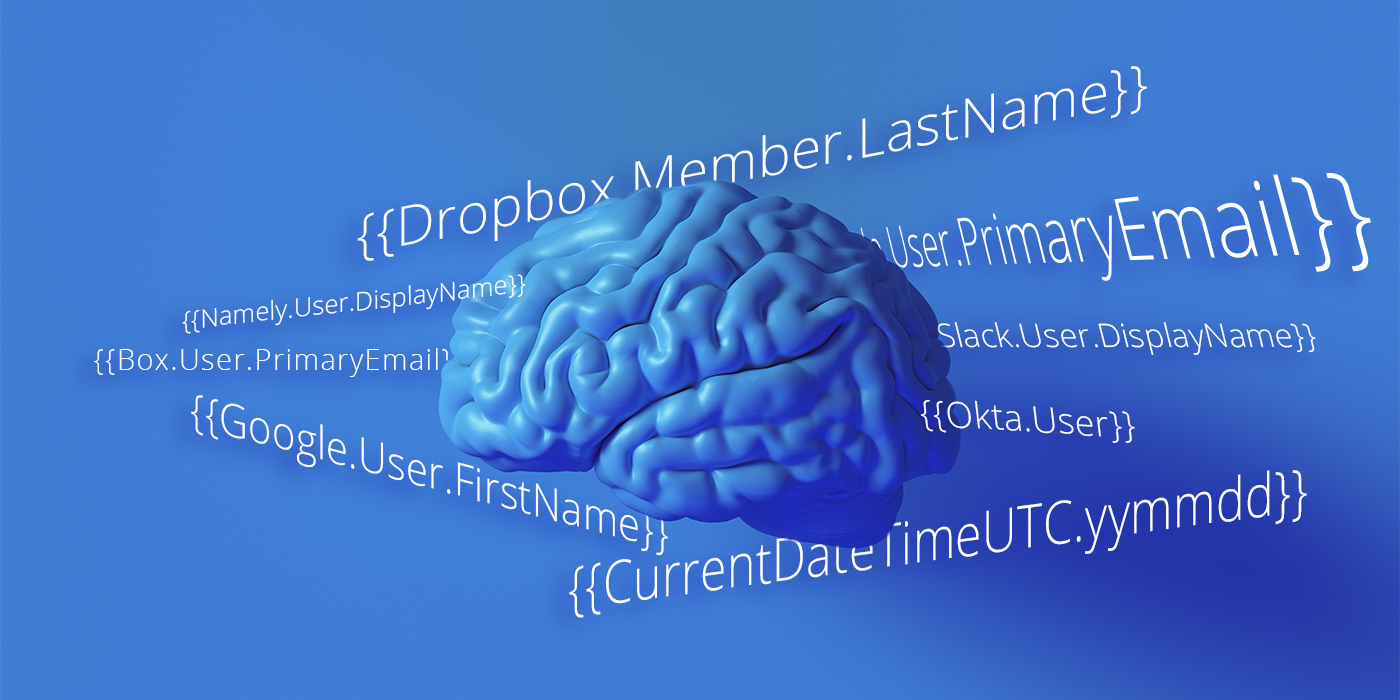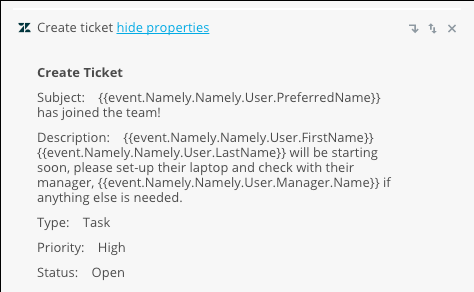Product Tip Tuesday: How to make your workflows intelligent with dynamic fields
February 19, 2019
2 minute read

Welcome back to another Product Tip Tuesday! This week, we take a look at Dynamic Fields, a feature that helps make your automated workflows more personalized and scalable.
Dynamic Fields, which are available within alerts, actions, and workflows, are fields in BetterCloud that make it possible to pull unique values from across your domain.
Here’s an example of how they work. Instead of sending an email to a group of people with a generic opening like “Hi there,” you could use a Dynamic Field that customizes the email with each recipient’s first name, like this: “Hi {{FirstName}}.”
Dynamic Fields have a multitude of use cases, but the easiest way to get started is by creating more intelligent automated notifications, emails, and tickets. Here are three examples:
1. Craft detailed incident tickets and notifications
If a user violates your policies, you can use Dynamic Fields to create an informative notification sent via email, Slack, or webhook.
A generic notification such as “A user has shared a confidential file publicly” would require you to investigate further. But with Dynamic Fields, you receive a contextual briefing on what specifically occurred: “{{John}} {{Doe}} shared the Dropbox file {{‘CONFIDENTIAL BetterCloud Product Roadmap’}} publicly at {{2:05 p.m.}}.”
Similarly, comprehensive Zendesk tickets like the one below can give your admins necessary context before completing a task.

Or maybe you’d just like to be alerted when a user has been fully onboarded or offboarded. With Dynamic Fields, you can receive a simple notification that the deprovision process for {{FirstName}} {{LastName}} is complete.
2. Send detailed welcome messages to new employees
You can create a personalized experience for incoming employees with a welcome email on day one. Without needing to look up information beforehand, you can populate your standard welcome template with user profile information like name, department, manager, and title from your source of truth.
3. Create a scalable process for offboarded user auto-replies
When a user leaves the organization, business continuity is essential. Using Dynamic Fields, you can build an auto-reply action as part of your offboarding process that will intelligently direct someone to email the user’s manager. This provides a scalable alternative to delegating a user’s inbox or manually entering in each auto-reply.

That’s all for this week! For a deeper dive into Dynamic Fields, check out this article in the BetterCloud Help Center.





